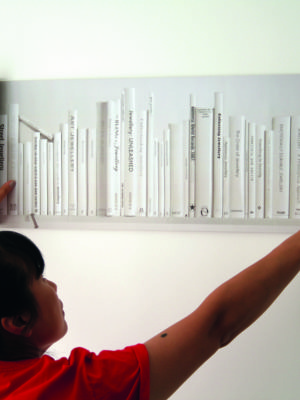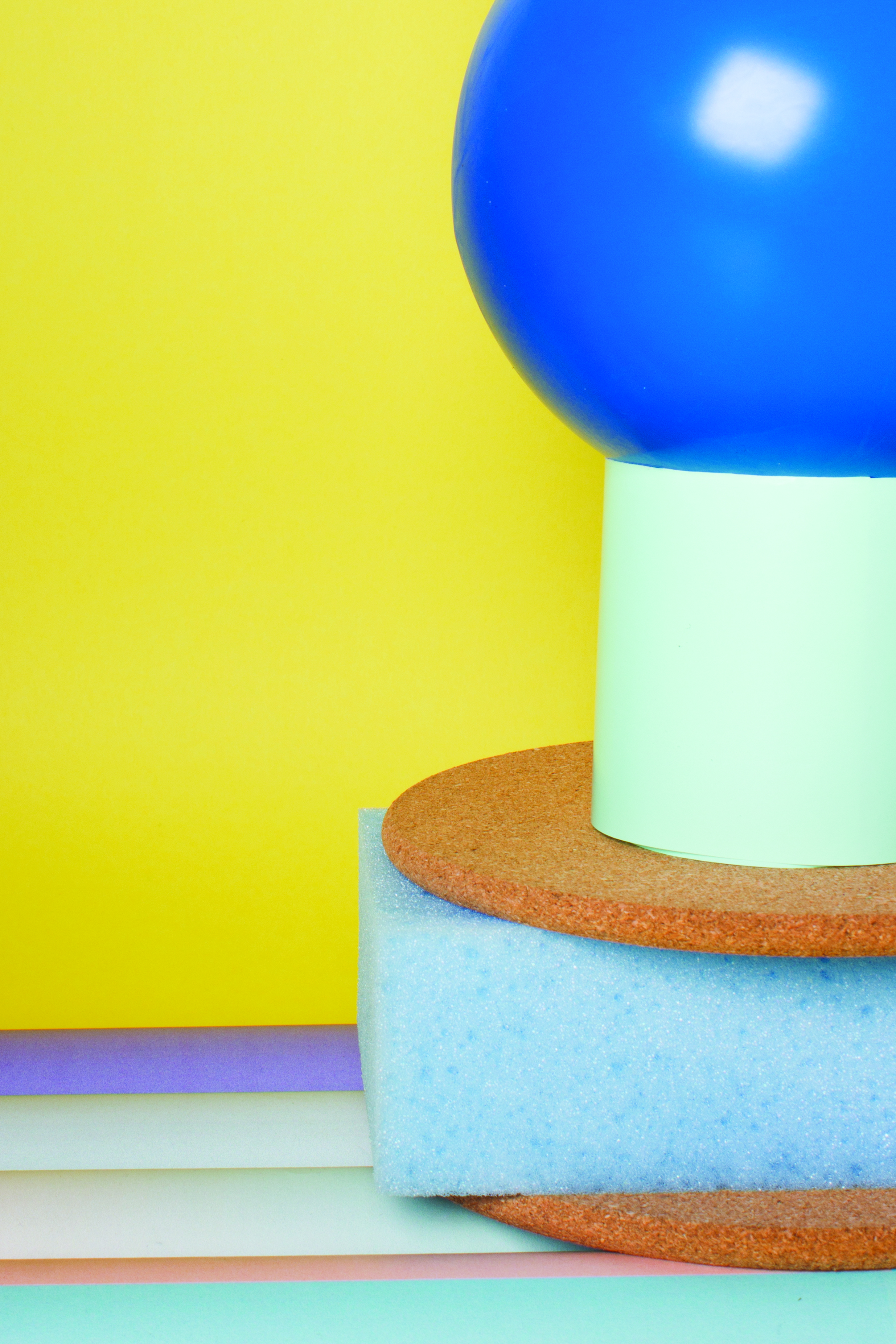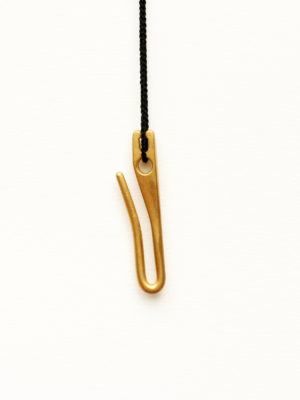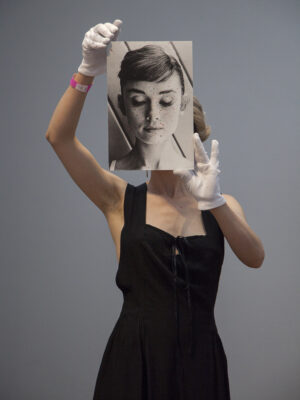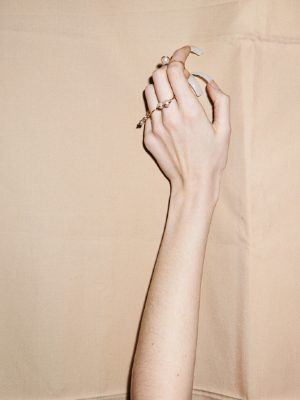Martijn van Ooststroom (MVO)
As a tribute to our winner, Lin, we decided to organise a symposium that takes on themes from her work. We wanted Lin’s award ceremony to be a public event during the OBSESSED! festival, and for her work to be shown in Amsterdam. It will be a symposium about making, materiality and the recent popular interest in craft. It will be about jewellery, but broader – more about crafts and applied arts in general. We invited three speakers to expand on the idea of ‘making objects’ for the symposium on 10 November. We approached Grant Gibson, who used to be the editor of Crafts magazine in the UK and now has a wonderful podcast called Material Matters. We invited him to do a keynote speech and to interview Lin. Then we have Juliette Huygen, a researcher here in Amsterdam at the Center for Material Culture at the Tropenmuseum. She has a jewellery background, but she also has an anthropological view of how material objects function within a culture. Thirdly, Jan Boelen, artistic director of Z33 and head of the department of Social Design at Design Academy, Eindhoven, will speak about how we look at and engage with everyday objects.
Lin Cheung (LC)
The symposium will relate to ideas included in my work: materiality, current issues, being a maker and how we might all deal with that. It touches upon the issues and subjects that come into my consciousness and how they come out as a piece of work. It felt like it might be nice to explore some of these subjects in an installation, so I proposed to the museum a piece of work from about ten years ago. I did an installation of fictitious jewellery book titles, called Jewellery Library. Maybe people already know Jewellery Library as a double-sided poster that you can put on your bookshelf – but I’m going to recreate the original installation. Jewellery Library was part of outlining what inspires me, where I see ideas and how I engage with the world.
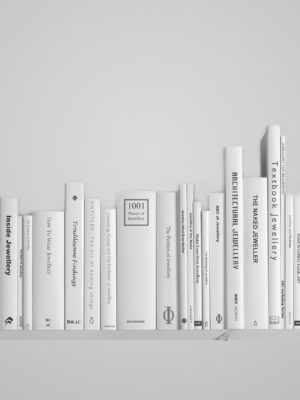
MVO
The Stedelijk Library is a really great place for research into contemporary jewellery. The head librarian is really running with the idea. So, to coincide with Jewellery Library, he is making a display of all of the jewellery books and publications that they have. The Stedelijk also takes it as an invitation for the people who visit OBSESSED! to have a look, which is important to know for students who visit Amsterdam.
LC
I think that, if there is a contrast between the known books about jewellery and my imaginary ones, it’s a poignant thing, isn’t it? It’s a pertinent sort of question. I feel that I am always exploring jewellery as a subject, asking: ‘what is it?’ I’m always curious to define it. It is an art form that evolves and reflects. I feel that it is important to think about what jewellery is just when I think I know it: ‘this is jewellery’, ‘this is what it looks like’ and ‘this is what it says in the dictionary.’ An object that you wear has the capacity to be morphed or changed with what is going on either in your own life or in society. It is something we can put unknowns into, an object that can carry that positively. We are always obsessed with knowing things. Museums are full of knowledge and great insight, but in those places there are little signs of things we don’t know, like labels of ‘unknown.’ I like that! I think uncertainty is important. It’s not a lack: I think it’s human. I feel that jewellery is moving along those same exploratory lines. Some of the titles in Jewellery Library reflect absences or preconceptions about jewellery. They play a little humorously on the titles of existing books and areas of cultural life. Perhaps it will also comment a bit about contemporary art jewellery. You know, the major players, key artists, publishers and ways of accessing jewellery knowledge. Some titles are quite serious, and others are very playful, just seeing what would happen.
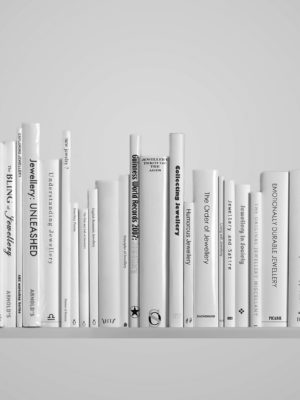
MVO
On the one hand, it’s a lighthearted piece, it has a subtle humor. Anyone who reads art history books has a sort of ingrained knowledge about a publisher and the typeface they use. In Jewellery Library, instead of The History of the Art it’s The History of Jewellery, for instance. But it is in the same typeface, with the same publisher – at least at first sight. It sort of subverts the idea of a singular art historic canon in a way that’s quite humorous. Also, I think it is critical in the sense that it’s talking about the place of jewellery within the art world. It’s commenting about visibility. Because of course there’s this narrative within the jewellery field that we want to be acknowledged within the wider art world, which can be a bit frustrating, but jewellery is a different field of expression. In my view, it stands alongside the visual art world. We don’t have to be part of the visual art narrative because there’s a plurality in the art world. This work reflects on that in a very intelligent, but lighthearted way. So, that’s why we wanted it to be shown in Amsterdam as part of the OBSESSED! festival. I think it is an important contribution.
LC
I totally agree with that. It’s about the thinking around jewellery. So, in artifact terms, yes, perhaps it wouldn’t sit well within the contemporary or fine art field because of the complications of form and reading the piece as an object. But actually, as an attitude, I feel it stands alone. You can engage anybody and everybody through jewellery from whatever standpoint they have: either educated about it or not, or through naivety, or curiousity, or if they don’t wear jewellery, or they know nothing about it, or they’re an expert. There’s always some way you can engage and end up talking about life. I find that it is very powerful. So, where it might be seen as a limitation, I see it as a powerful act and subject to engage with.
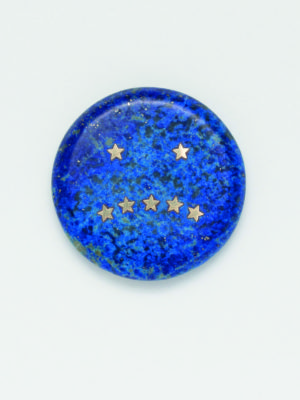
MVO
This is one of the reasons why Lin won the Françoise van den Bosch Award, because of her communicative qualities. Her work is very humanistic in a way. It’s not shouting, but it wants to relate to the world and to people who are open to it. It’s not only talking to the contemporary jewellery scene per-se, it’s talking to a much wider audience. I think that’s important at this moment. Lin always knows how to translate a concept into a material form that stands on its own. So that even if you aren’t aware of the concept behind it, it speaks to you. I think that’s very important too: to communicate.
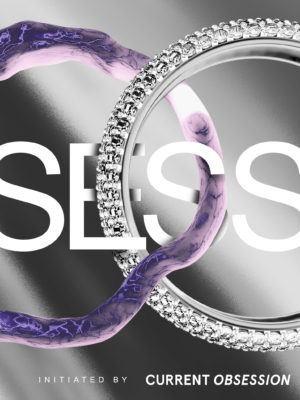
This article is published
in the OBSESSED! Jewellery Festival Paper.
OBSESSED! is a biennial jewellery festival taking place in various cities across the Netherlands. OBSESSED! unites the best jewellery-related events – museum and gallery exhibitions, talks, fairs, book presentations and artist open studios – into one intriguing programme put together by Current Obsession.
The Relevance of Crafts
Françoise van de Bosch presents Lin Cheung at Stedelijk Museum
10 November 2019
14:00–16:30
Location: Teijin Auditorium
Admission: Museum ticket + 3 Euro
www.obsessedwithjewellery.com/event/francoise-van-de-bosch-presents-lin-cheung/
